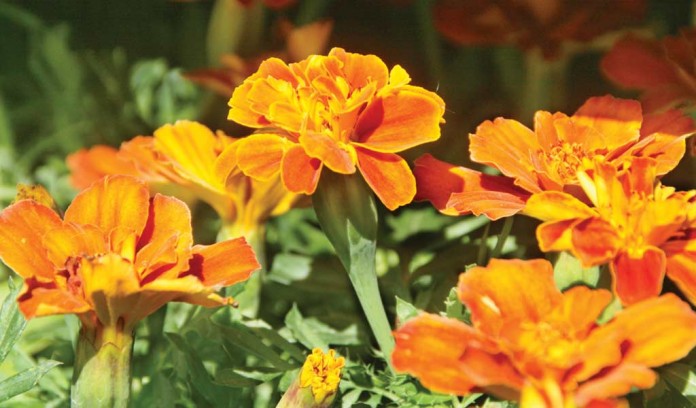Annuals are plants that complete their entire growing cycle (germinate, bloom, set seed and die) in one year, according to University of Minnesota Extension. In other words, they must be replaced each year.
Annuals are great to plant in a cut flower garden. They can also be planted in perennial garden beds to fill in after early blooming perennials have faded.
Pushing your shopping cart through your local home improvement store or supercenter, you’re probably overwhelmed with the vast number of choices of flower seeds and bulbs to choose from. Or, if you’ve leafed through seed catalogs lately, you’ll find even more choices of seeds, seedlings and bulbs.
More gardening resources:
10 tips for beginning gardeners
Here are some tips for planning an annual flower garden, from choosing flowers to arranging them.
How to plan an annual flower garden: Location
Hardiness zones, soil types and amounts of sun and shade are factors to consider while planning the location of your annual flower garden.
Hardiness zone
You need to choose seeds, seedlings or bulbs that are known to grow well in your hardiness zone. If you’re an Ohioan, you live in hardiness zone 5b, 6a or 6b. If you’re not familiar with USDA hardiness zones, read up here.
Some plants behave differently depending on the growing zone, so it’s important to grow annuals that will be able to tolerate your climate.
Annuals are classified as hardy, half-hardy or tender, based on the temperatures they can tolerate. According to Minnesota State University Extension and Univers
- Hardy annuals can be directly sown, may bloom late in the season and may thrive in cooler temperatures but wilt in hot weather.
- Examples: pansies, snapdragons
- Half-hardy annuals are sown indoors, will bloom in late spring or early summer, may bloom again in the fall and can tolerate some cooler temperatures.
- Examples: petunias, calendulas
- Tender annuals require a longer growing season and bloom late in the season. They can’t tolerate cool temperatures.
- Examples: marigolds, zinnias
Soil type

Soil drainage, moisture retention and soil aeration are other factors that should be considered before planting. To test soil drainage, University of North Carolina Cooperative Extension recommends digging a 10-inch deep hole and filling it with water. Allow it to drain, then fill it with water again. If the water is drained after 8-10 hours, then the site has acceptable drainage for most flowers. If soil doesn’t drain, excess moisture and poorly aerated soil may result.
Amount of sun and shade
Some annual flowers require full sun while others need shade or partial shade. Check the information on seed packets to determine where to plant.
Some annuals that require full sun are marigolds, zinnias, petunias and pansies.
Some annuals that require partial shade are begonias and impatiens.
How to plan an annual flower garden: Aesthetics
The look of your annual flower garden is likely important to you. Have a strategy in mind for your annual flowers before you buy. Consider the colors and sizes of annuals to plant.
Colors
Warm colors draw attention to spaces while cool colors are relaxing and calming. Montana State University Extension offers the following advice when planning the colors of flowers to plant:
- Consider contrasting warm colors with cool colors:
- Plant warm colors (red, orange and yellow) in smaller amounts to subdue them.
- Plant cool colors (green, blue and violet) in larger amounts to balance the warm colors.
- If you don’t want to contrast colors, avoid placing warm colors next to cool colors. Instead, plant analogous colors so the transition isn’t as striking.
Sizes
In an annual garden bed, plant the tallest flowers at the back, especially if the back of the bed is against a fence or shrub barrier. In front of the tallest flowers, plant flowers that are slightly shorter. The shortest flowers should be planted in front.
If your garden bed is an island in your yard, you can plant the tallest flowers in the center, then plant shorter flowers around.
Which annuals should I plant this spring?
Once the threat of frost is over, direct seed annuals or transplant seedlings started indoors. Here are some suggestions of annuals to plant, which will give a range of colors, shapes and sizes.
- Asters
- Begonias
- Calendula
- Cosmos
- Geraniums
- Impatiens
- Marigolds
- Nasturtiums
- Pansies
- Petunias
- Snapdragons
- Sunflowers
- Zinnias










